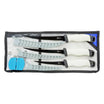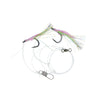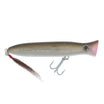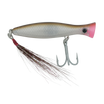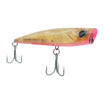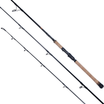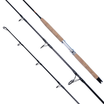
Throughout the year in South Florida waters, the fast moving current associated with spillways, weirs, dams and locks offer an extensive feeding ground for snook of all sizes. Offering a wide variety of forage, structure and ambush points, these productive fishing areas can be a bit daunting for anglers unfamiliar with how to fish in heavy current.

Fishing The Swing
One of the most productive angling techniques for fishing in heavy current is to cast your lure up-current, allowing it to sink close to the bottom, while closely tending the slack line as the lure sweeps near the bottom along with the current. The technique itself is quite simple, but mastering the finesse needed to detect contact with the bottom, while sweeping with the current and avoiding snags takes an experienced hand.

Surface Swinging: When fish are visibly feeding near the surface and baitfish activity is evident, lures can be retrieved right at, or just below the surface. To accomplish this, cast up current and begin your retrieve as soon as the lure hits the water. While pointing your rod tip towards the lure, use a medium speed retrieve to retrieve slack, while imparting short rod tip twitches to impart an erratic darting action.
Mid-water Swinging: Following the same principal and surface swinging, once a cast is made up current, allow the bait to sink for several seconds, then begin a steady retrieve. Mid-water swinging is ideal when surface activity is minimal, but fish are still feeding aggressive. This technique avoids most obstructions, but keeps you close to the feeding zone.
Bottom Swinging: This challenging method requires extreme attention from the angler. Your goal when bottom swinging is to keep the lure in near constant contact with the bottom. Reaction strikes from finicky fish will occur as the lure rolls and bounces off rocks, ledges and boulders. Unfortunately, this technique requires your presentation to be in close contact with heavy snags. Pay very close attention to your rod tip on the sweep, keeping perfect tension on the line as the lure bounces. When a lure becomes snagged on an obstruction, engage the reel and retrieve all slack. Once tight to the lure, pull back on the rod, then un-engage the reel to "snap" the rod tip. Often times, this quick snapping action can free a lure from the bottom.

Lure Selection:
Swimbaits dominate in spillway situations. Choosing the right size lure to match local forage and an appropriate weight that's ideal for the depth and current make swimbaits the most versatile presentation available. We offer two styles of swimbaits perfect for swinging the current.
Protail Paddle Swimbaits: These heavy duty paddle tail swimbaits can be fished in medium to very fast current. Available in sizes from 3.5" to 6.5" to imitate a wide variety of forage and weights from 1oz to 6oz, they can be fished in nearly any current. For most Florida anglers, a 1oz to 2oz swimbaits will cover 90% of your fishing. In very heavy current, bumping to a 3oz weight may be necessary to maintain bottom contact.
Slowtail "Twin Tail" Swimbaits: These unique swimbaits feature a fan tail design that allows for exceptional action at the slowest of retrieve speeds. Slightly lighter in weight than their Protail Paddle cousins, these baits are ideal for slow to medium fast current. Available in 3.5" - 5.5" lengths and weights to 1.25oz, they will cover a vast majority of fishing situation. Slowtails are preferred in cooler months when snook may be lethargic and less inclined to chase a bait.




















